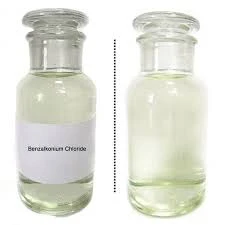water flocculation chemicals
Water Flocculation Chemicals Essential Agents for Water Treatment
Water pollution poses a significant challenge globally, threatening not only the environment but also public health. To combat this issue, various methods of water treatment have been developed, with flocculation being one of the most effective processes. Flocculation is a chemical water treatment process that involves the agglomeration of fine particles suspended in water into larger aggregates called flocs. These flocs can be easily removed from water, making the treatment process efficient. A crucial aspect of this process is the use of water flocculation chemicals.
What are Flocculation Chemicals?
Flocculation chemicals, often referred to as coagulants, are substances that promote the agglomeration of particles in water. They work by neutralizing the charges on particles—typically suspended solids—allowing them to clump together. Once these particles form flocs, they can more easily be separated from the water through sedimentation or filtration. Common flocculants include aluminum sulfate (alum), ferric chloride, and polyacrylamides, among others.
Types of Flocculation Chemicals
1. Inorganic Coagulants These are the most traditional flocculants, including compounds like alum and ferric chloride. Alum is particularly popular due to its cost-effectiveness and availability. It helps reduce turbidity and is effective in removing organic matter and microorganisms from water. Ferric chloride, on the other hand, is known for its high efficiency in low pH water and is often used in industrial wastewater treatment.
2. Organic Coagulants These chemicals are usually polymers that can enhance the flocculation process. Polyacrylamides are commonly used in this category, offering advantages such as a lower required dosage compared to inorganic coagulants. They are particularly effective in removing fine particles that inorganic coagulants may struggle with. Some organic coagulants can also aid in settling and reduce the amount of sludge produced during the treatment process.
3. Composite Coagulants These are blends of inorganic and organic coagulants, designed to combine the advantages of both types. They can target specific contaminants more effectively and may enhance the overall efficiency of the flocculation process.
The Flocculation Process
water flocculation chemicals

The flocculation process typically involves several stages
1. Coagulation This is the initial stage where coagulants are added to the water. The coagulants neutralize the charges on the particles, initiating the formation of flocs.
2. Floc Formation After coagulation, the water is gently stirred, allowing particles to collide and form larger aggregates, or flocs.
3. Flocculation In this stage, the water is mixed slowly to encourage the growth of larger flocs, which can be easily removed.
4. Sedimentation or Filtration Finally, the formed flocs are removed from the water, either through natural sedimentation or filtration processes.
Benefits of Using Flocculation Chemicals
The use of flocculation chemicals in water treatment offers numerous benefits. First, they significantly reduce turbidity, producing clearer water. Second, they assist in the removal of pathogens, ensuring that the water is safe for consumption. Third, flocculation chemicals can minimize the volume of sludge generated during the treatment process, which reduces disposal costs and environmental impact.
Conclusion
Water flocculation chemicals play a vital role in the treatment of polluted water, reinforcing their significance in public health and environmental protection. As water quality standards become increasingly stringent, the demand for effective flocculation chemicals is likely to grow. Continued research into new and more efficient flocculants will further enhance water treatment technologies, helping to secure safer water for communities worldwide. As we address the global water crisis, understanding and utilizing these critical chemicals will be essential for sustainable water management and environmental preservation.
-
The Ultimate Guide to Flocculants: Transforming Water TreatmentNewsNov.01,2024
-
Improve Your Water Treatment Solutions with PolyacrylamideNewsNov.01,2024
-
Enhance Your Water TreatmentNewsNov.01,2024
-
Empower You to Achieve the Highest Standards of Water QualityNewsNov.01,2024
-
Effective Scale InhibitorsNewsNov.01,2024
-
Discover the Power of Poly Aluminum Chloride in Water TreatmentNewsNov.01,2024





